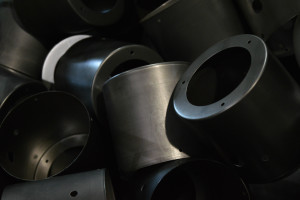Metal Fabrication
Metal fabrication is a form of metalwork that overlaps with several other metalworking specialties. The main focus is transforming the metal during manufacturing.
Metal fabrication involves three top-level processes, plus the finish, that are completed using a variety of tools and machines. The methods used depend on the project and level of customization desired.
Cutting
Raw material is burned so it can be sheared, or cut to the appropriate size. Band saws or chop saws can also be used. Cutting torches are best when large segments of steel need to be cut because torches require little effort. Laser cutting is becoming more and more popular as a modern technique that ensure precise and accurate cutting.
Bending
Also known as forming, this is where the metal is bent through the use of force. The force comes from press brakes or more efficient robotic machines. Programmed software controls these machines, resulting in precise forming.
Assembling
There are various options used for assembling the metal products. They include, but are not limited to, binding, welding and further bending.
Finish
Production doesn’t end after stamping. After the welding, parts are re-checked for accuracy before they are completed according to the original engineer’s drawings. After cooling, the product is typically sand blasted before the finish is applied. There are many ways to finish a product before it goes out the door. This could include priming, painting, sealing, etc – it depends on the project. Once the smooth, safe finish is applied, the product is inspected again before distribution.

Metal fabrication is considered a value-added process that encompasses the production of machines or other structures from raw materials. Typically, structural steel or sheet metals are commonly used as raw materials in the above processes. Common types of metal fabrication include forging, casting, machining and metal stamping. The process usually relies on engineered drawing to determine the most precise cuts, stamps, holes, intricacies, etc. A lot goes into not only producing metal pieces through the deep drawn process but also the metal finishing of each piece, to make them just right for your specific application needs.
Metal Fabrication Industries
Metal fabrication is a subsector of the manufacturing industry. It encompasses the process of transforming metal into parts or end products that do not include larger product categories such as machines or electronics. The fabricated metal manufacturing subsector is comprised of various industry groups, each producing different types of products.
- Architectural Metals
- Structural Metals
- Coating & Engraving
- Wire/Spring
- Heat Treatment
- Allied Activities
- Hand Tools
- Cutlery
- Hardware
- Stamping
- Tanks and Boilers
- Shipping Containers
Custom Fabrication
Most metal fabricators offer or are capable of providing custom metal fabrication. Custom projects may encompass anything from one part or product to thousands. Generally, designs from engineers are provided to give metal fabrication shops the blueprints for the custom project.
Many fabricators focus on a variety of specializations, including welding, forging, brazing, shearing, drawing, spinning, and punching. Higher-level specializations include hydraulics and electrical services. Often times, shops will employ engineers to work directly with clients to develop custom drawings and continue to work with one another throughout the fabrication process. Custom projects can include anything from lighting fixtures, automotive parts, vacuum cleaner nozzles, machine or conveyor components, as well as decorative stamped metal pieces.
Have questions on metal fabrication? Ask away!